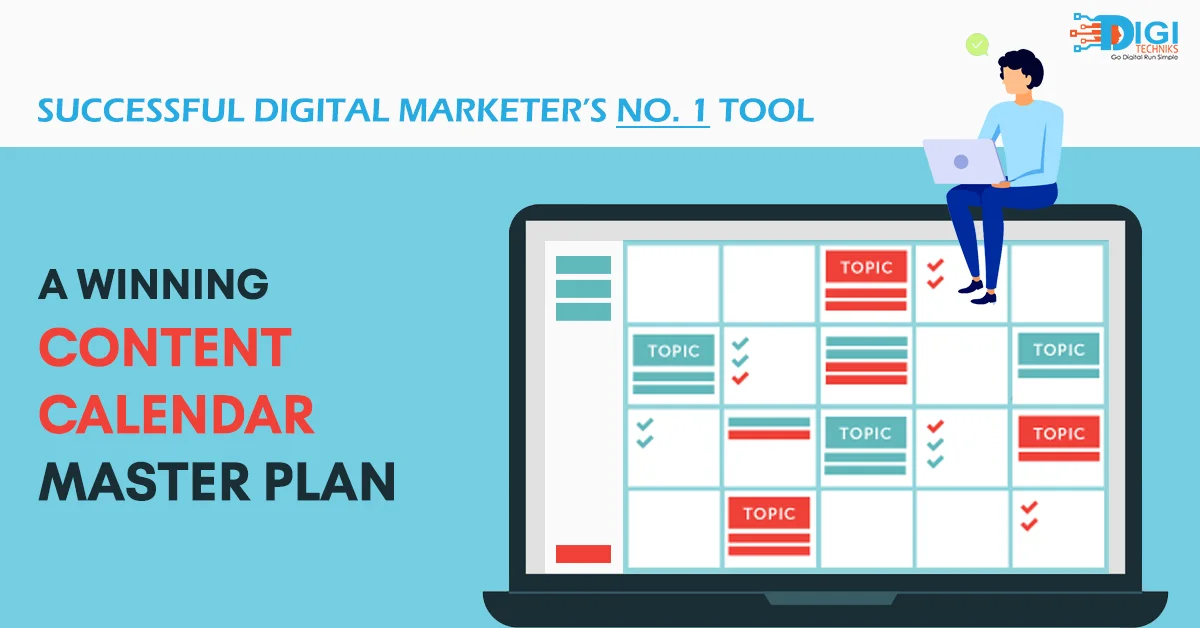
Content creation runs the wheels of your digital marketing and social media efforts.
From improving search rankings to generating leads to building customer trust, content is the key ingredient that helps meet your online marketing goals. The more high-quality content you produce, the higher are your chances of success.
Creating content, however, cannot be done in a random way. It requires a process, a plan, and the right strategy to get the most out of it.
Related Article– 11 Step Content Creation Strategy To Convert Your Contacts To Contracts
The problem of inconsistency
The impact of social media and its ability to drive traffic to your site and increase conversion is huge. And yet, many businesses are not sure about how to tap into this terrific marketing platform. Either they are not aware of how to use social media correctly or unable to reap the highest advantages of social media as they fail to post useful content for their fans and followers customers regularly.
And, inconsistency is one of the biggest social media follies. In fact, this one factor can single-handedly derail your entire digital marketing ecosystem. Consider these stats:
- Presenting a brand consistently across all platforms can increase revenue by up to 23%
- Of successful B2B marketers, 69% have a documented content strategy
- Of the unsuccessful marketers, only 16% have a documented content strategy
Clearly, having a strategy plays a significant role in the online marketing success of a business.
So how does inconsistency actually relate to your social media activities?
Posting to social media at random times, without following any consistency throughout the week fails to engage your followers.
Today when brands and businesses are churning out and blasting huge amounts of content, there’s a content overload on your prospects’ social media feed. Therefore, when your posts don’t show up on a regular basis, it’s very likely that they will be buried deep in people’s timelines and won’t get enough likes, comments, views, and shares.
That’s how inconsistency hinders your brand on social media.
Also, Read 7 Essential Ingredients of a Winning Headline
Without a plan, you’re leaving money on the table
Inefficiency in content production leads to an estimated loss of $958M each year for mid-to-large B2B US companies
Many businesses that post randomly and without a plan, run the risks of making two glaring mistakes:
A) They either post a lot on certain weeks, while their page goes completely silent on other times. Result? It confuses your followers and deters people from becoming new followers. So, the time, effort and money you spent on building a following is lost.
B) They post sporadically. This leads to a loss of credibility with customers, prospects, and even potential employees as they will often search for your business on social media. If people are greeted with a business page that seems inactive, their perception about your business is not favorable.
The solution lies in having an effective content calendar. The 3Rs — Reach, Register, and Recall activities — are vital aspects of any business to become a brand and it isn’t possible without a proper content calendar. (Read how the three-step Reach, Register, and Recall formula can elevate the branding of small and mid-sized businesses running on low budget.)
The way to be consistent: A content calendar
First of all, what is a content calendar?
A content calendar is very simply a calendar that helps to streamline, organize, and even automate what content to publish and when.
Typically, content calendar planning is done on a monthly basis but you can also go ahead and plan for the coming three or six months. But remember, long-term plans need constant tweaking to keep them current.
When you follow a calendar dedicated to keeping a track of the exact day and time each piece of content will be posted, you will not only stay consistent but also find it easier to maintain your content publishing efforts.
You can do content calendar planning for all types of content, be it a blog post, image, infographics, video or any other content format.
So now that you’ve seen the importance of content calendar planning, how do you go about it?
Step-By-Step Content Calendar Planning
1. Decide on the type of content that fits your brand image
What type of brand image do you have/you’re trying to build? Are you serious and authoritative or casual and fun?
Based on this, you need to decide on the content formats that will align best with your brand and interest your target audience. For example, a fun and easy-going B2C brand will benefit from posting memes and GIFs, while these formats won’t work too well for a professional or serious B2B business.
2. Decide on social “snackable” content as per the platform requirement
The next step is to understand which content formats work well for which platform. The reason why this is important is that every platform is different and has its own audience. And each audience group has their own preferences for the things they want to see on the platform. This can have an impact on the performance of your social media posts.
As a general guideline, here’s a quick glance at the content types that are suited to each social media platform:
- Facebook: Curated content, videos, live streaming, carousel ads
- Instagram: High-res photos, quotes, stories, live videos, memes, carousel ads
- Twitter: News, blog posts, and GIFs
- LinkedIn: Jobs, company news, and professional content such as testimonial videos
- YouTube: Explainer videos, blog-based videos, webinars, long format videos etc.
- Pinterest: Infographics, step-by-step photo guides, other visual content
Also, Read 5 Step Content Distribution Process: The Secret to Catapult Your Content Marketing ROI
3. Finalise daily themes on a weekly basis
A theme-based post is a great idea to rake in those likes, shares, and views. Why? Because it builds on the consistency factor, which we’ve just discussed above. Plus, it gives your content team a template to follow, which makes their job easier.
Here’s an example of such weekly theme-based posts:
-
- Monday motivation — Motivational posts to start off the week on a positive note. These posts work well because people can easily relate to them and get inspired by them, so they get liked and shared easily.
- Tips Tuesday: Helpful tips that can be shared in the form of carousels.
- Myth vs. facts — Busting popular myths and misconceptions allows you to educate your audience and position your brand as a trustworthy source of information.
- Thoughtful Thursday — A mid-week pick me up for your audience
- Funny Friday — A good way to reel in the weekend spirit by posting something fun and casual.
- Success Saturday — A testimonial video to wrap up the week, reinforcing the positives about your brand.
4. Research important days or events of the week
In India, we have a special event, a festival or a holiday nearly every other week. And, these are excellent opportunities for you to stand out and engage with your audience. Therefore, it’s well worth your effort to note down all the events and festivals that will take place in a given month and create posts around them.
Here are some ways you can further capitalize on even-based posts:
- Use a countdown timer sticker on your Instagram Story.
- Create a campaign with a unique branded hashtag and make it a trend.
- Organize giveaways and contests to boost event awareness.
5. Identify the trending topics related to your business
What’s trending in your industry? Keeping a track of the news and latest happenings in your niche allows you to:
- Find inspiration for your content production
- Curate interesting, relevant content to share with your audience
- Watch your competitors for new ideas or strategies
Use tools like SEMRush, SpyFu, or you can also search on Twitter and look for trending hashtags to find the hottest topics to cover in your niche.
Also, Read 5 Step Digital Marketing Strategy to Target the Right People with Right Content
The final step: Content calendar planning
Start planning the content calendar as per the daily theme of the week. Pick one trending topic or customer pain point per week and create content around them in your chosen content format.
You can use a simple tool like Google spreadsheet or Google Calendar to make sure every aspect of your content calendar is written down. An important thing to remember is, your content calendar does not necessarily have to be set in stone. It can — and must — be tweaked based on what’s working and what’s not.
A surefire way to social media and digital marketing success is to first understand your business model’s viability and your market acceptance. Therefore, we recommend you to first run this 3 step digital marketing and branding strategy one week at a time before you go all out with your social media marketing and branding efforts.
At Digitechniks, every piece of content we produce and post is laid out in a content calendar and helps us streamline our content creation and distribution efforts to capture and convert the right list of audiences. This has enabled us to execute many successful content strategies for our brand and those of our clients.
Do you want to get a personalised 1-to-1 discovery session?
Book your 1-to-1 discovery call with us today!



